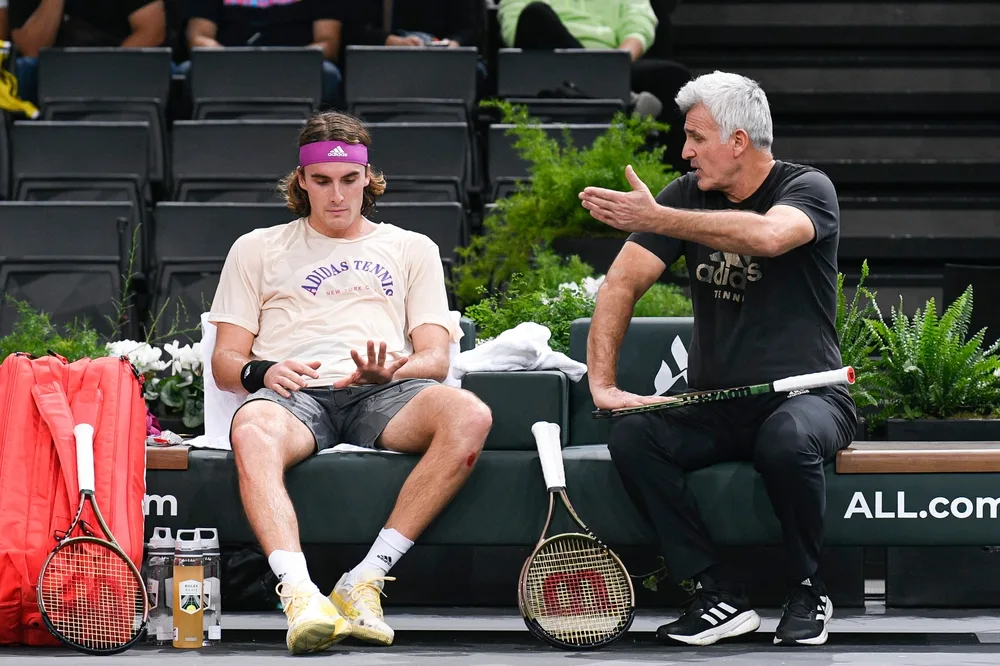
Coaches play a vital role in prepping tennis players for major tournaments and helping them hone their skills. Without a coach, tennis players would not be able to play as expertly as they do.
However, coaching is not allowed when the players are playing in any of the tennis tournaments. So, why is this the case?
In any tennis tournament, on-court coaching is not permitted because the matches are only between two participants. Furthermore, this is the mental part of tennis when competitors are on equal footing. However, there is a rule change allowing coaching from player boxes.
In the past, coaching was not allowed, intended to level the playing field. Here’s why coaching is not allowed in tennis and how this rule has been amended and what it means for tennis.
What Is The Reason Coaching Isn’t Allowed In Tennis?
The general rule is that there can be no on-court coaching during a Grand Slam, ATP, WTA, ITF, or any other major tennis tournament match.
Tennis is traditionally regarded as an individual sport. Once a player enters the court, neither the coach nor the team should influence their performance unless specifically permitted by the rules.
Only players have control over their outcomes on the court, and they must win with a mix of heart, mind, and body, not advice.
Allowing coaching will alter the notion that a tennis match will be a contest between just the tennis players on the court. This applies to both singles and doubles for both men and women.
Tennis matches can be challenging since you play against an opponent alone. A part of tennis’s challenge is learning to change your strategy as the match progresses to account for the opponent and the circumstances that may arise. Both physical and mental health are highly valued.
Often, the tennis player more capable of making those mental adjustments will prevail in a contest between players of equal talent. Mid-match coaching could make less rounded athletes more competitive by negating certain aspects of their mental fitness.
Tennis players are aware that the better competitor doesn’t always win. It is not sufficient to simply strike the ball well. Tennis is not a game where you strike a ball; it’s a test of your ability to make decisions, solve problems, and maintain your composure under pressure.
It challenges participants to solve challenges, maintain composure under pressure, and determine how to handle challenging matchups.
This important feature of tennis is eliminated when players can be coached and are replaced by mindless automatons that blindly follow their coach’s instructions. You can better understand what it takes to become a great player by comparing tennis to a game of chess.
Tennis coaches frequently make reference to the idea that true champions are those players who manage to triumph despite subpar play. The players must assimilate the knowledge coaches impart throughout training.
Additionally, players at several tennis levels, including the pro ITF level, cannot afford to bring their trainers to tournaments. If coaching were allowed, those athletes who could afford to do so would have an unfair advantage, unleveling the playing field.
What Is The New Tennis Tournament Coaching Rule?

Although on-court coaching is still illegal, a slight change has shaken things up in tennis matches. Coaching from the authorized coach box or chairs are permitted off the court. As of this year, players can now get coaching during games, including at the Grand Slam level.
This new regulation has already been used by many tennis players. All of the male players at this year’s men’s US Open had a player box on the side with their crew, trainers, coaches, etc., so they may give instructions to the player throughout the match.
It’s a valuable asset that enables them to adapt more easily to the match. Their crew can better observe the opposition and identify potential weaknesses on both sides.
This seems to provide an intriguing dynamic because players only get coaching every two games when they are on the same side as their box.
Although this new rule appears to be functioning properly so far, some players have complained that their opponent’s team box is a bit too noisy, regardless of them being on the player’s side. Many avid fans seem to have conflicting emotions regarding the new coaching rule.
However, it has been pointed out that some tennis players had been coached regardless for various reasons before the new rule.
This is because many preferred it when individuals would have to adapt independently and depend on quick reflexes and quick-thinking abilities throughout each game. That seems to be yet another crucial component of being a great tennis player.
What Happens If A Coach Coaches During A Game?
The offending player receives a warning at first if the umpire determines that the player is being coached. Although a warning is not a real punishment, it usually implies that the player and coach will be watched more closely by the officials for the rest of the game.
A coaching violation, typically carrying a point penalty, will be issued by the umpire if they observe a second coaching violation. The next step is a game punishment once the guilty player has been penalized a point because of a coaching offense.
Conclusion
A tennis player is on their own once they step on the court. That’s the allure of this sport: you’re alone on the court, trading hard shots with your opponent.
It resembles a game of chess in that you strive to outmaneuver your opponent at every turn. It’s only you, your capacity for handling stress, your insight, your physical and mental stamina, and your resolve to battle for every point.
